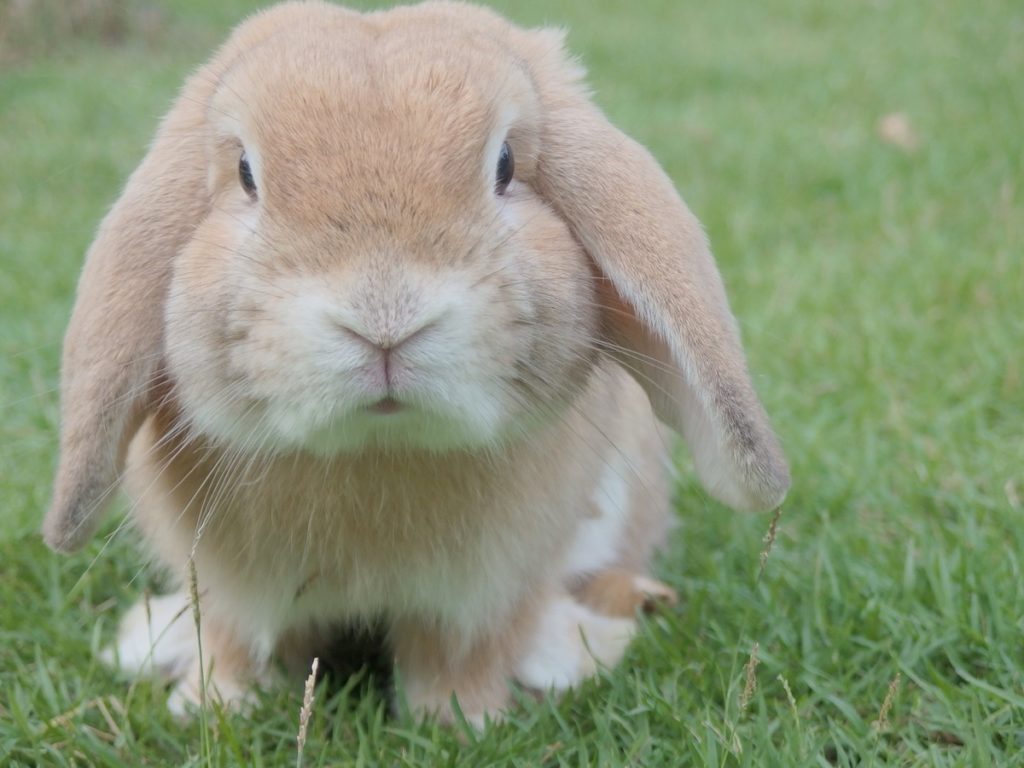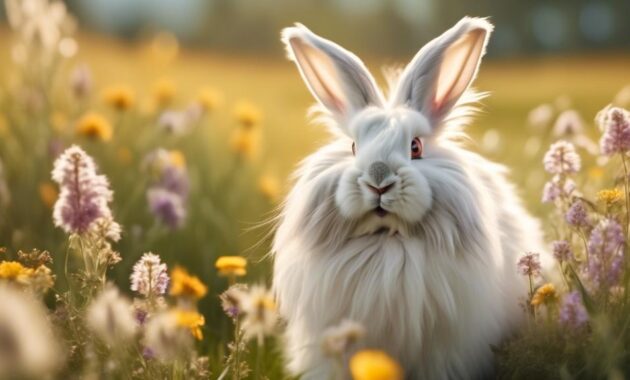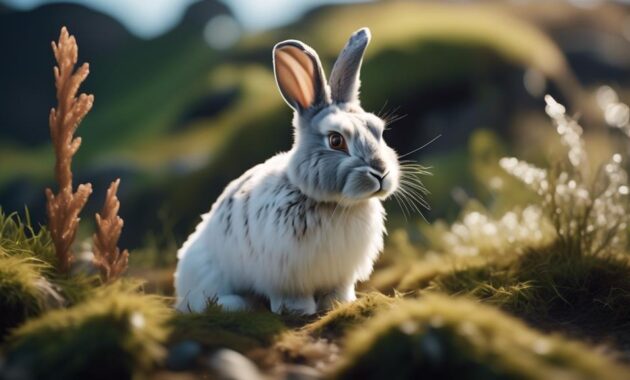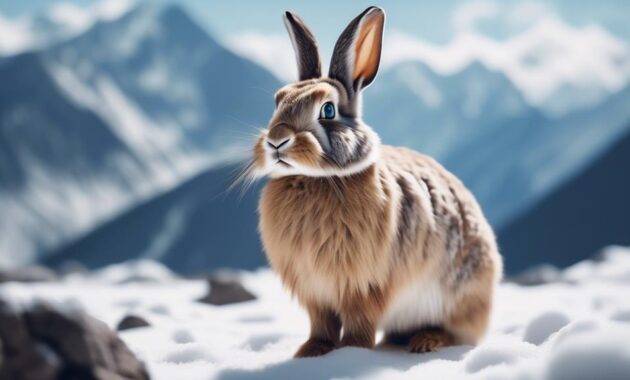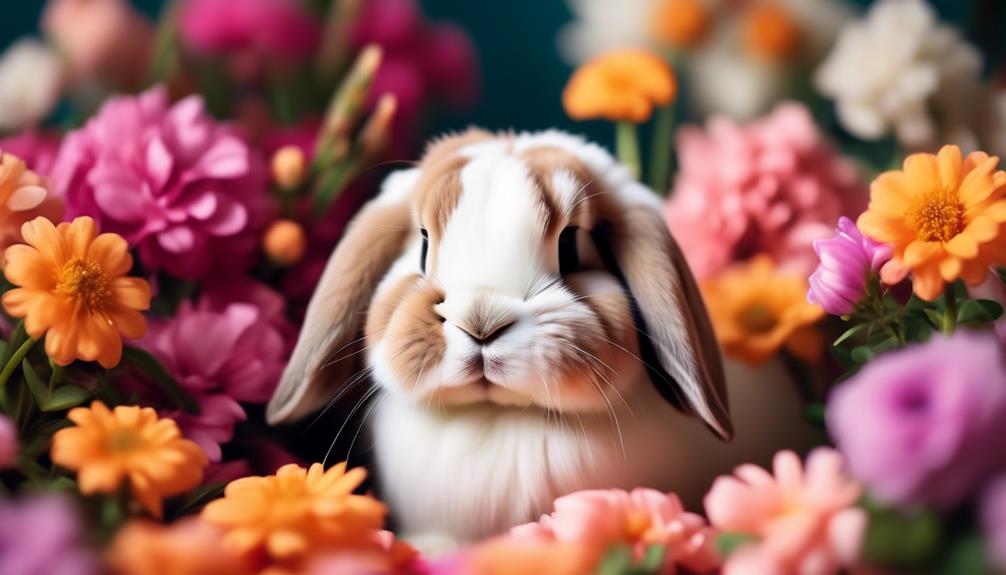
Imagine walking into a room filled with fluffy clouds of cotton candy, their soft pastel hues melting together in a sea of sweetness. Now, picture those clouds coming to life, hopping around with curious eyes and twitching noses. That’s the kind of enchantment you can expect when you meet the Mini Lop breed.
But their charm goes beyond their irresistibly adorable appearance. As you delve into their world, you will uncover a wealth of information about their history, unique characteristics, and the joys and responsibilities that come with being a Mini Lop owner.
So, why wait any longer? Let’s embark on this delightful journey and discover all there is to know about the lovable Mini Lop breed.
Key Takeaways
- Mini Lops are a medium-sized rabbit breed known for their friendly and playful temperament.
- They have a compact body type and weigh between 4.5-6 pounds.
- Mini Lops have rounded, well-furred ears that lop vertically.
- Their coat comes in a variety of colors and requires weekly brushing to keep it soft and tangle-free.
Mini Lop Breed Information
If you’re looking for a friendly and playful rabbit breed, the Mini Lop is an adorable choice. Weighing between 4.5-6 pounds and with a compact body shape, they’re well-suited for singles, seniors, families with children, and even first-time owners.
Mini Lops have a friendly and affectionate temperament, making them a great pet for anyone seeking companionship. Originating in Germany, they were created by breeding a German Lop with a small Chinchilla rabbit. In the 70s, they were brought to the United States by a breeder named Bob Herschbach and were crossbred with a Standard Chinchilla rabbit.
Mini Lops have rounded, well-furred ears that lop vertically and a massive, thick body. Their luxurious soft, medium-length coat comes in a wide range of colors and markings, offering pet owners plenty of options for customization.
With proper care, including regular grooming and a balanced diet, Mini Lops can live indoors or outdoors and provide endless joy and entertainment for their owners.
Mini Lop Breed History/Origin
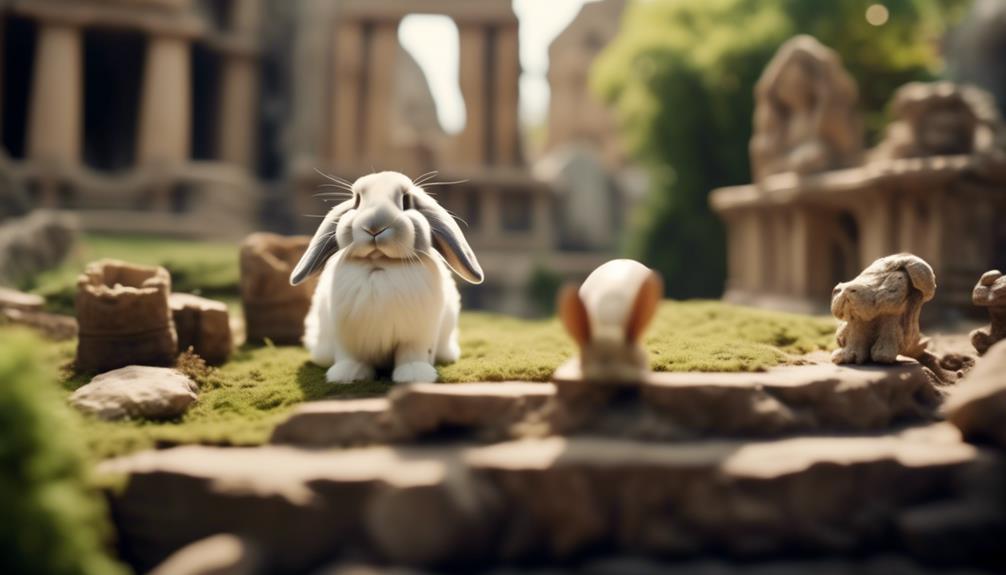
The Mini Lop breed originated in Germany through the breeding of a German Lop with a small Chinchilla rabbit. Also known as Klein Widder or Little hanging ear, it was brought to the United States in the 70s by a breeder named Bob Herschbach. In order to improve the breed, it was crossbred with a Standard Chinchilla rabbit.
The Mini Lop was accepted into the American Breeders Association (ARBA) in 1980. This breed is characterized by its compact body, rounded and well-furred ears that lop vertically, and a massive and thick body. Mini Lops have a luxurious soft, medium-length rollback coat that comes in a wide range of colors and markings.
They offer a customizable appearance and are a popular choice for pet owners and shows alike.
Overall Description
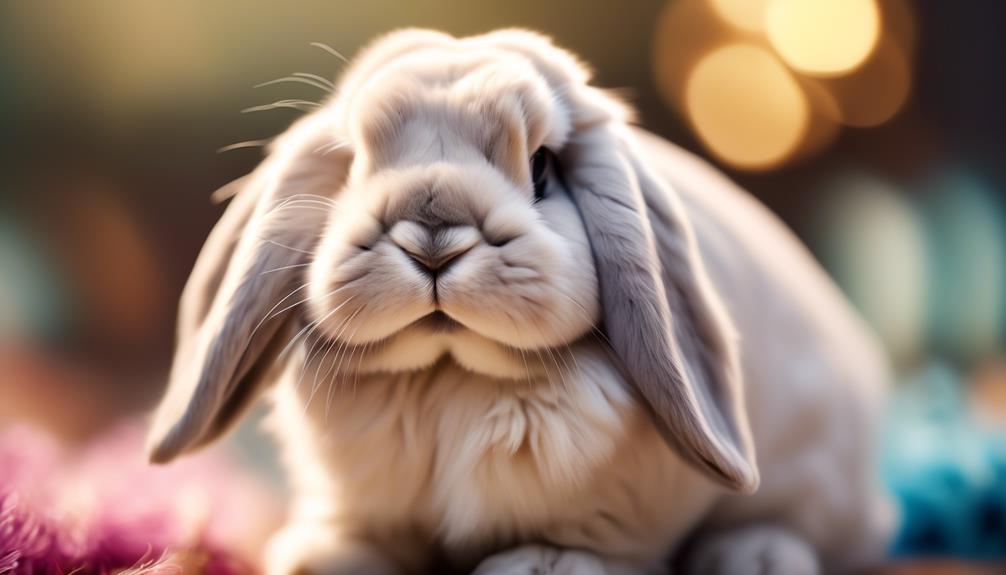
With a compact body, rounded and well-furred ears that lop vertically, and a massive and thick body, the Mini Lop breed is truly adorable. Here’s why you’ll fall in love with them:
- Their compact body type gives them an irresistibly cute appearance.
- The rounded and well-furred ears add to their charm and make them even more endearing.
- Their massive and thick body gives them a cuddly and huggable feel.
- The short neck and broad head give them a unique and distinctive look.
- Mini Lops weigh between 3-6 pounds, making them the perfect size for snuggling and carrying around.
With their adorable features, it’s no wonder that Mini Lops are a favorite among rabbit enthusiasts. Their compact size and charming appearance make them the perfect companions for singles, seniors, families with children, and even first-time owners.
Coat and Colors
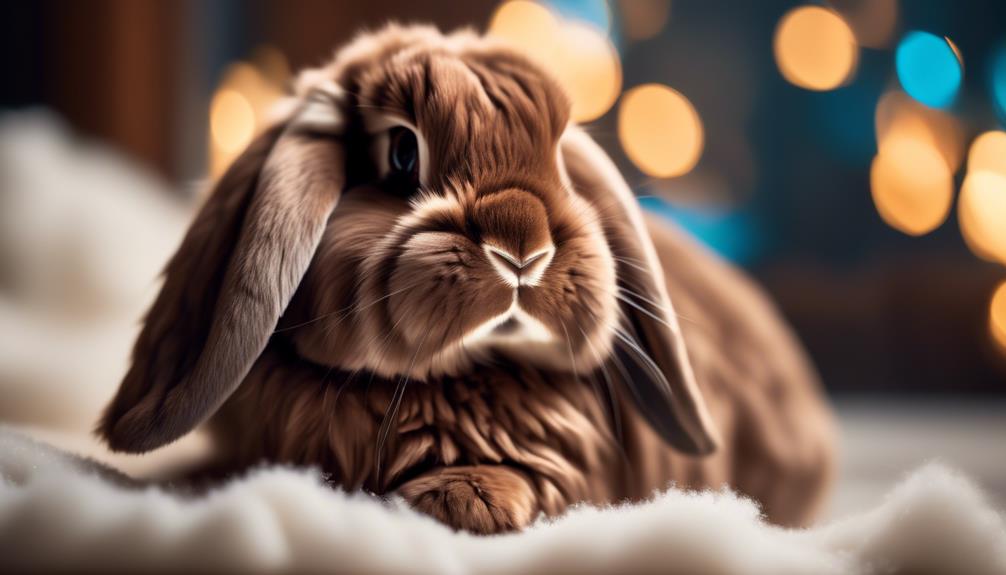
When it comes to the Mini Lop breed, their coat and colors are as diverse and beautiful as their personalities. Mini Lops have a luxurious soft, medium-length rollback coat that requires weekly brushing to keep it soft and tangle-free. Shedding occurs twice a year. They come in a wide range of accepted colors and markings, including agouti, broken, pointed white, self, shaded, ticked, and wide band. Some common colors include Chocolate, Ruby-eyed white, Opal, Lynx, White, Black, Chestnut Agouti, Chinchilla, Blue-eyed white, Lilac, Orange, Blue, and Tri Color. Mini Lops offer a wide variety of color options for pet owners, adding diversity in shows. They are practically customizable in terms of appearance.
| Coat and Colors | ||
|---|---|---|
| Agouti | Broken | Pointed White |
| Self | Shaded | Ticked |
| Wide Band |
(Source: Mini Lop Breed Information)
Care Requirements
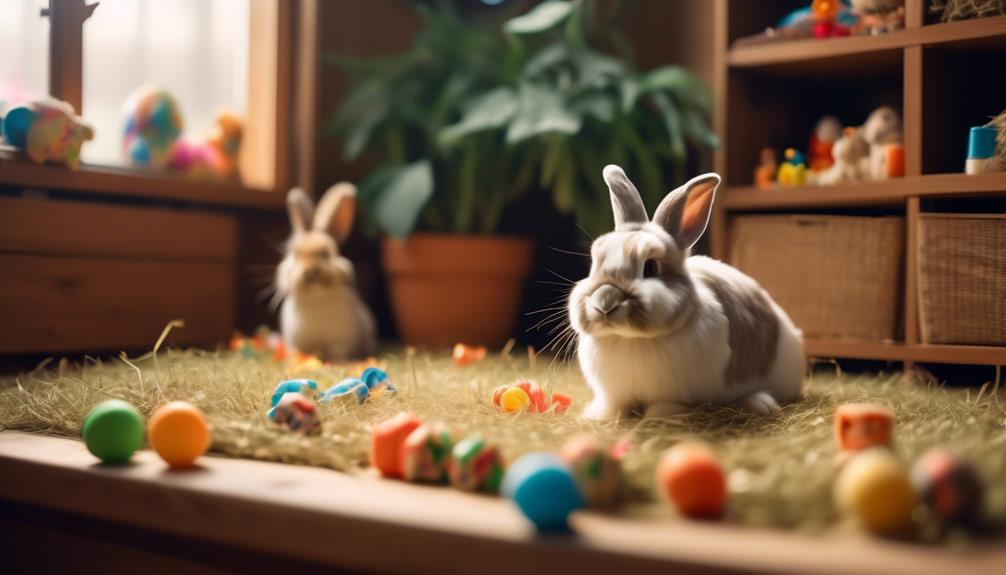
To properly care for a Mini Lop rabbit, it’s important to understand their specific requirements and needs. Here are some key care requirements to keep in mind:
- Provide a safe and secure indoor or outdoor enclosure that offers enough space for the rabbit to move and play.
- Ensure the enclosure is protected from harsh weather conditions, as Mini Lops are sensitive to extreme temperatures.
- Offer regular out-of-enclosure time to bond with your rabbit and provide mental stimulation.
- Feed a balanced diet consisting of 70% good-quality hay, fruits, leafy greens, vegetables, and pellets.
- Regularly groom your Mini Lop to prevent hairball blockage and monitor their teeth and ears for any health concerns.
Housing and Enclosure
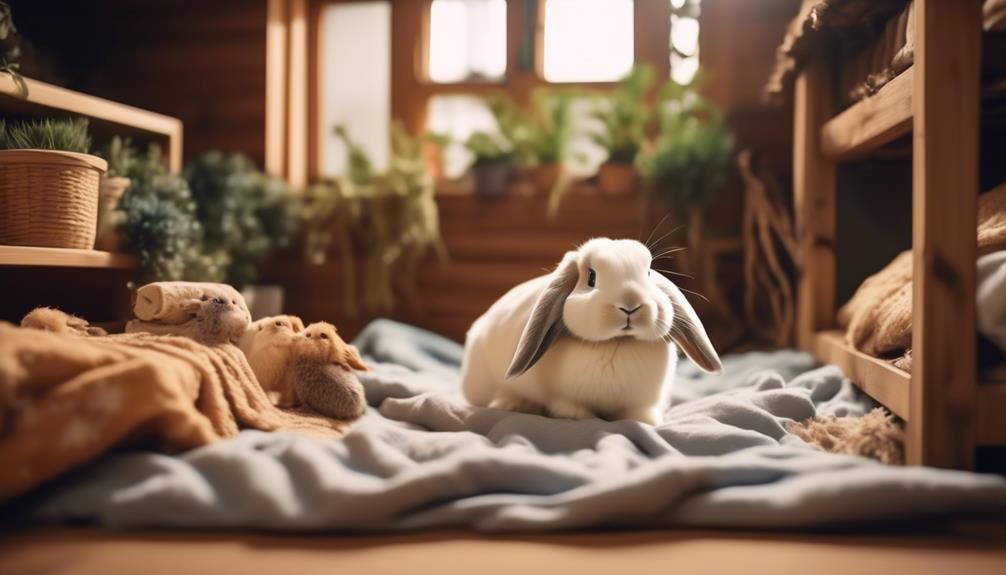
Now let’s focus on the essential aspect of providing proper care for your Mini Lop rabbit: their housing and enclosure.
Whether you choose to keep your Mini Lop indoors or outdoors, it’s important to provide them with a safe and comfortable living space.
If you opt for an outdoor enclosure, make sure it’s protected from harsh elements and provides enough space for your rabbit to move and play. A raised and spacious outdoor hutch is ideal.
For indoor rabbits, a wire enclosure with enough room to stretch out is recommended.
Regardless of the type of enclosure, Mini Lops should also have regular out-of-enclosure time to bond with their owners.
Diet and Nutrition
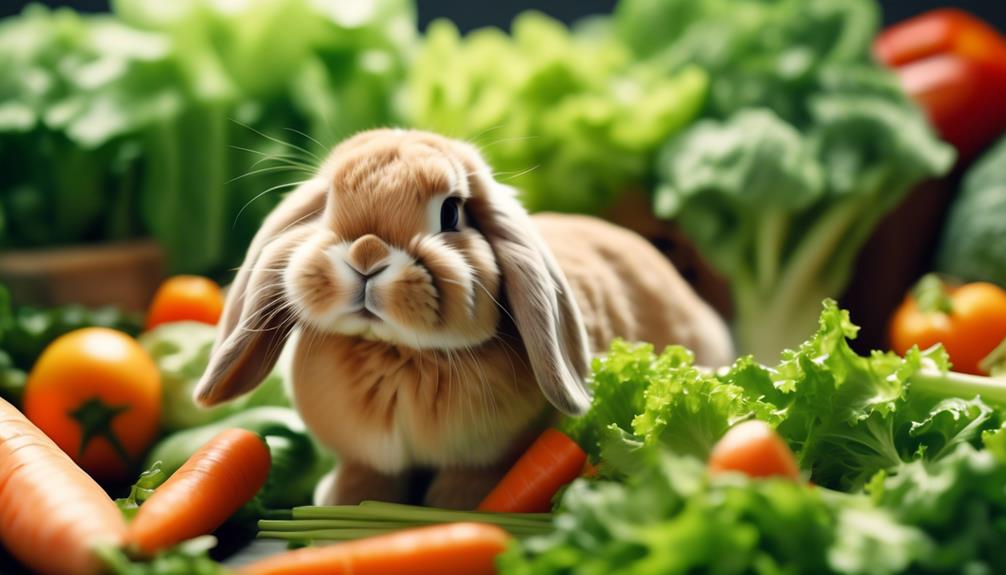
Proper diet and nutrition are essential for the health and well-being of your Mini Lop rabbit. Here are some important points to consider:
- Hay, such as orchard or timothy hay, should make up 70% of your Mini Lop’s diet. It helps maintain dental health and provides essential fiber.
- A balanced diet includes a variety of fruits, leafy greens, and vegetables. These provide important vitamins and minerals.
- Pellets specifically formulated for rabbits should be given in moderation. They provide additional nutrients and help maintain a healthy weight.
- Fresh water should always be available for your Mini Lop. It’s important for hydration and overall well-being.
- Avoid feeding your Mini Lop foods that are high in sugar or fat. These can lead to obesity and other health problems.
Health Concerns and General Care
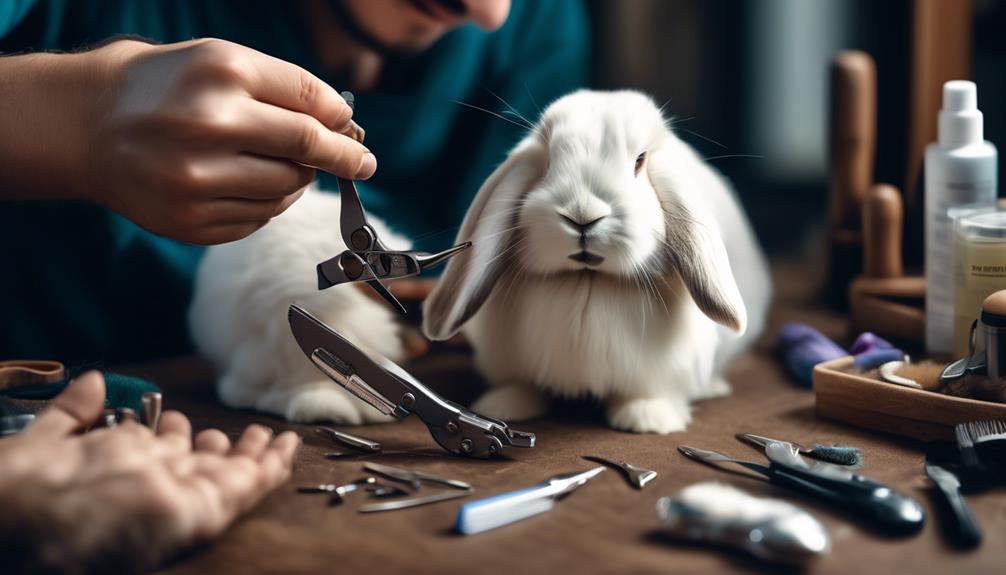
Regular grooming and feeding roughage can help prevent hairball blockage and ensure the overall health of your Mini Lop rabbit. Mini Lops have a thick rollback coat that requires weekly brushing to keep it soft and tangle-free. Shedding occurs twice a year, so regular grooming is essential.
It’s also important to monitor your rabbit’s teeth growth and seek veterinary attention if they become overgrown. Mini Lops have floppy ears that are prone to infections, so regular cleaning is necessary to prevent any issues.
Socialization with people is important for their well-being, so make sure to spend quality time bonding with your rabbit. Responsible pet ownership includes regular veterinary check-ups, grooming and cleaning routines, providing appropriate toys and mental stimulation, and ensuring a balanced and nutritious diet. Regular exercise and playtime are also important for their physical and mental well-being.
Frequently Asked Questions
Are Mini Lops Hypoallergenic?
No, Mini Lops are not hypoallergenic. They have fur that can trigger allergies in some people. If you have allergies, it’s important to consider this before getting a Mini Lop as a pet.
Do Mini Lops Require Regular Grooming?
Yes, Mini Lops require regular grooming to keep their luxurious coat soft and tangle-free. Brushing them weekly and monitoring their ears for infections are important aspects of their care routine.
Can Mini Lops Be Litter Trained?
Yes, Mini Lops can be litter trained. They are intelligent and can easily learn to use a litter box. Provide a suitable litter box and consistently reinforce good litter habits.
How Do Mini Lops Interact With Other Pets?
Mini Lops can be friendly and sociable with other pets, but it depends on the individual rabbit’s temperament and the other pet’s behavior. Proper introductions and supervision are important to ensure a harmonious interaction between Mini Lops and other pets.
Are Mini Lops Prone to Any Specific Health Issues?
Mini Lops are prone to specific health issues. Regular grooming and feeding roughage can prevent hairball blockage. Monitor teeth growth and seek veterinary attention if overgrown. Floppy ears require regular cleaning to prevent infections.
Are Mini Satin Rabbits Similar to Mini Lop Rabbits in Terms of Temperament and Care Needs?
Yes, charming mini satin rabbits share some similarities with mini lop rabbits in terms of temperament and care needs. Both breeds are known to be affectionate, gentle, and social animals, requiring regular grooming, a balanced diet, and spacious, secure housing for optimal health and happiness.
Conclusion
So, if you’re looking for a furry friend that isn’t only cute but also friendly and affectionate, the Mini Lop breed is the perfect choice for you.
With their playful temperament and adorable appearance, they’ll surely steal your heart.
From their well-furred ears to their luxurious coat, Mini Lops are simply irresistible.
And with proper care in terms of housing, diet, and health, you can enjoy all the joys of being a proud Mini Lop owner.

